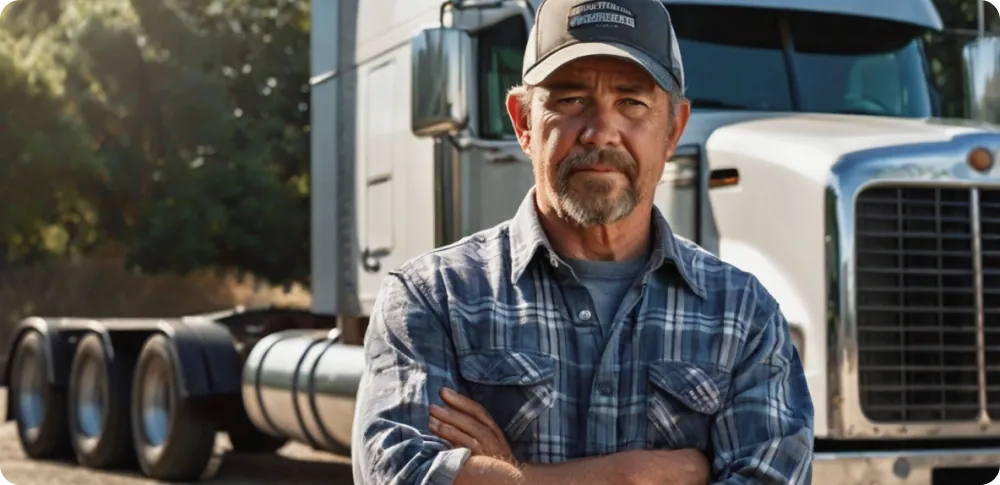Breakdown of Questions on Vehicle Inspection and Operation for Obtaining a CDL in California
02/06/2025
Info Center

Vehicle inspection and proper operation are integral parts of safely driving commercial vehicles. In this article, we will thoroughly examine the key aspects of vehicle inspection and driving rules, as well as answer important questions that may appear on the exam for obtaining a Commercial Driver’s License (CDL) in California.
Why Is It Important to Conduct a Vehicle Inspection?
Vehicle inspection is primarily about ensuring the safety of the driver, passengers, and other road users. Defects identified during the inspection help prevent breakdowns or accidents. Laws require that vehicles be inspected regularly. If a vehicle is deemed unsafe, it cannot be operated until all issues are resolved.
Main Questions and Answers
1. Why is it important to back toward the driver’s side?
Backing toward the driver’s side provides a better view through the side window, significantly reducing the risk of a collision. This is particularly crucial in low-visibility conditions. Backing toward the driver’s side means turning the vehicle so that the rear moves toward the driver’s side. This allows you to see the vehicle’s movement through the side window rather than relying solely on the mirrors.
2. How do you start moving on an incline without rolling back?
To avoid rolling back:
Use the clutch in vehicles with a manual transmission.
Apply the hand valve (trailer brake) on the trailer if applicable.
For automatic transmissions, ensure the parking brake is engaged and release it gradually.
3. Why is it important to use a helper when backing up?
A helper can watch the blind spots and alert the driver to hazards that are not visible from the cab, increasing overall safety when reversing.
4. What is the most important signal to agree upon with a helper?
The most important signal is “Stop.” It allows you to halt the vehicle immediately if needed.
5. What are the two special situations that require downshifting?
Before descending a hill. This prevents brake overheating and helps control speed.
Before entering a turn. This improves vehicle handling while turning.
6. When should you shift automatic transmissions to a lower gear?
Shift automatic transmissions to a lower gear when going downhill to increase engine braking efficiency.
7. Do retarders prevent skidding on slippery roads?
Retarders do not prevent skidding on slippery roads. Their use on ice, snow, or wet surfaces can increase the risk of skidding. They should be turned off in such conditions.
8. What are two ways to determine when to shift gears?
By engine RPM. Watch the tachometer and shift when reaching the upper limit of the operating range.
By speed (MPH). Use the speedometer to identify the proper speed for shifting.
9. What should you check while driving?
During the trip, the driver should monitor:
Tire pressure
Brake performance
Lights and reflectors
Trailer connections
Cargo security
10. Which key parts of the steering system should you know?
The main parts of the steering system are:
Steering wheel
Steering shaft
Hydraulic cylinder
Tie rod
Steering linkage
11. What defects can be found in the suspension system?
Common suspension defects include:
Broken or missing spring hangers
Cracked leaf springs
Leaking shock absorbers
Missing or damaged bushings
12. What three types of emergency equipment must be in the vehicle?
Required emergency equipment:
Fire extinguisher
Three red reflective triangles
Spare fuses
13. What is the minimum tread depth for front tires and for all others?
Front tires: at least 4/32 inch
All other tires: at least 2/32 inch
14. What should you check on the front of the vehicle during an inspection?
You need to check:
The operation of headlights (low and high beams)
Turn signals
Windshield cleanliness and wiper condition
The condition of tires and rims
15. What should wheel bearing seals be inspected for?
Inspect wheel bearing seals for:
Leaks
Wear or damage
16. How many red reflective triangles must you have?
You must carry three red reflective triangles.
17. How do you test hydraulic brakes for leaks?
To test:
Pump the brake pedal three times.
Hold the pedal down for 5 seconds.
If the pedal begins to move downward, there is a leak.
18. Why should you keep the ignition key in your pocket during an inspection?
Keeping the key in your pocket prevents someone from accidentally starting the engine, reducing the risk of injuries.
Conclusion
This article covers questions that may appear on the CDL exam in California. Proper inspections and knowledge of basic vehicle operation are not only mandatory for passing the exam but also essential for road safety. Follow these guidelines to prepare effectively for obtaining your commercial driver’s license.
